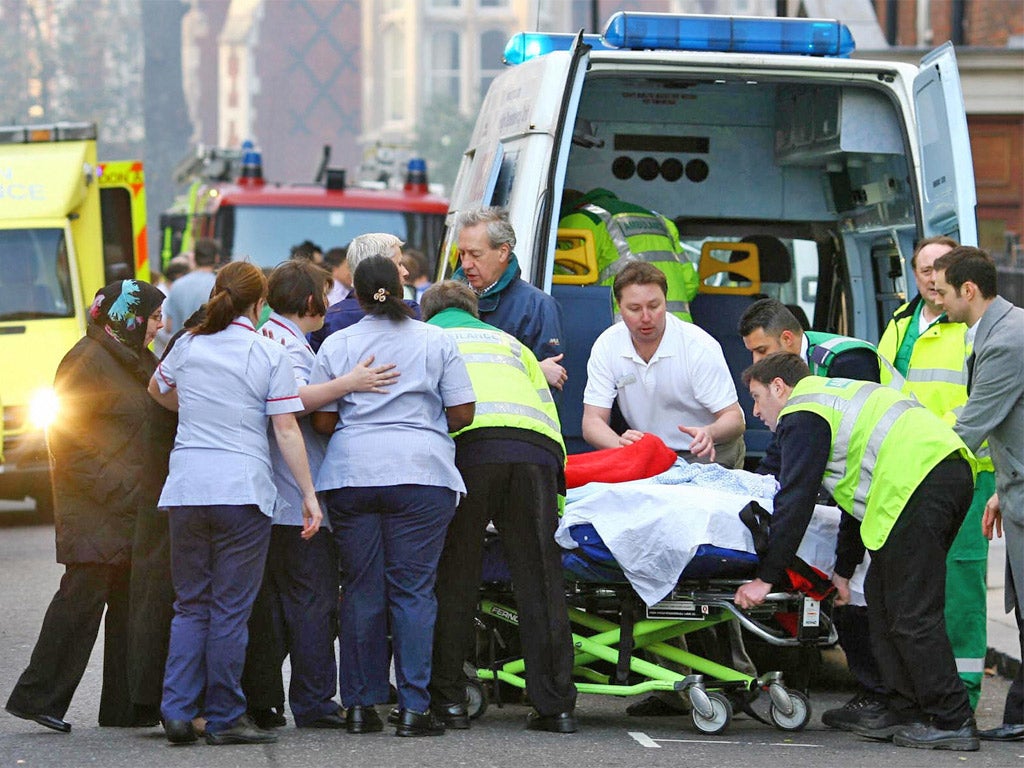Better access to GPs and social care ‘could solve the A&E crisis’
College of Emergency Medicine says that 'effective alternatives' need to be available seven days a week, for 16 hours per day

Your support helps us to tell the story
From reproductive rights to climate change to Big Tech, The Independent is on the ground when the story is developing. Whether it's investigating the financials of Elon Musk's pro-Trump PAC or producing our latest documentary, 'The A Word', which shines a light on the American women fighting for reproductive rights, we know how important it is to parse out the facts from the messaging.
At such a critical moment in US history, we need reporters on the ground. Your donation allows us to keep sending journalists to speak to both sides of the story.
The Independent is trusted by Americans across the entire political spectrum. And unlike many other quality news outlets, we choose not to lock Americans out of our reporting and analysis with paywalls. We believe quality journalism should be available to everyone, paid for by those who can afford it.
Your support makes all the difference.GP surgeries, social care services and NHS walk-in centres must open for longer to take pressure off casualty wards, leading emergency doctors have urged, warning that A&E is being taken to mean “anything and everything” by too many patients.
As a new analysis of official figures revealed that ever more accident and emergency are breaching national targets to see 95 per cent of patients in less than four hours, the College of Emergency Medicine said that “effective alternatives” to A&E needed to be available seven days a week, for 16 hours per day.
Outlining 10 key targets for resolving what it called “the emergency crisis”, the College also called for action to resolve a “massive staffing shortage” by making work on casualty wards more attractive with increased incentives for doctors working nights and weekends.
The report comes as an analysis of A&E attendance figures by the Health Service Journal found that the average NHS trust was seeing 93.9 per cent of patients in between April and September this year – just below government targets, despite this usually being the time of least pressure on A&E wards. Accident and emergency chiefs say they are preparing for what could “our worst winter yet” on casualty wards.
“The problem is, at the moment the only place where the lights are always on is the A&E department,” Dr Chris Moulton, vice president of the College told The Independent. “GP out-of-hours tend not to be as comprehensive in the type of patients they will see and are often appointment-based. Most walk-in centres and minor injury centres tend to be open 12 hours a day, maybe five or six days a week. The only 24 hour service is A&E.”
Dr Moulton challenged the findings of last week’s National Audit Office report into increased emergency admissions at England’s hospitals, which said that one of the main reasons for increased admissions appeared to be pressures on emergency doctors to meet the four hour target – which requires patients to be discharged or admitted in four hours to avoid breaches.
“We’re not admitting people because of time pressure, or because of targets, but because there is no viable alternative,” he said. “When you have an old lady who lives at home by herself, attending A&E at midnight, even with a minor condition, to send her home is cruel. She’s frightened, she’s worried. The last thing she wants is for you to send her home. We agree we don’t want her to be in hospital for long but this idea that everybody’s best at home is fallacious. There is no quick fix solution, because there isn’t a 24/7 service for getting people home and caring for them at home.”
Dr Moulton added that 50 per cent of emergency medicine training posts were still unfilled, with young doctors discouraged by the high pressure and challenging working conditions on A&E wards.
The Government has invested £250m into the most stretched A&E trusts this winter to avoid a repeat of last year, when a large number of trusts repeatedly broke targets amid unprecedented demand. The medical director of the NHS, Sir Bruce Keogh, is set to publish a major report of emergency care in England with recommendations for long-term reform to services.
Labour’s shadow health secretary Andy Burnham said that the government had to shoulder some of the blame for the crisis: “A&Es [have] suffered their first summer crisis in living memory,” he said. “A new round of severe cuts to home care services for older people has led to more of being admitted and then becoming trapped because they can't be discharged. Hospitals have continued to cut nursing posts and now many do not have adequate staffing levels.”
Join our commenting forum
Join thought-provoking conversations, follow other Independent readers and see their replies
Comments